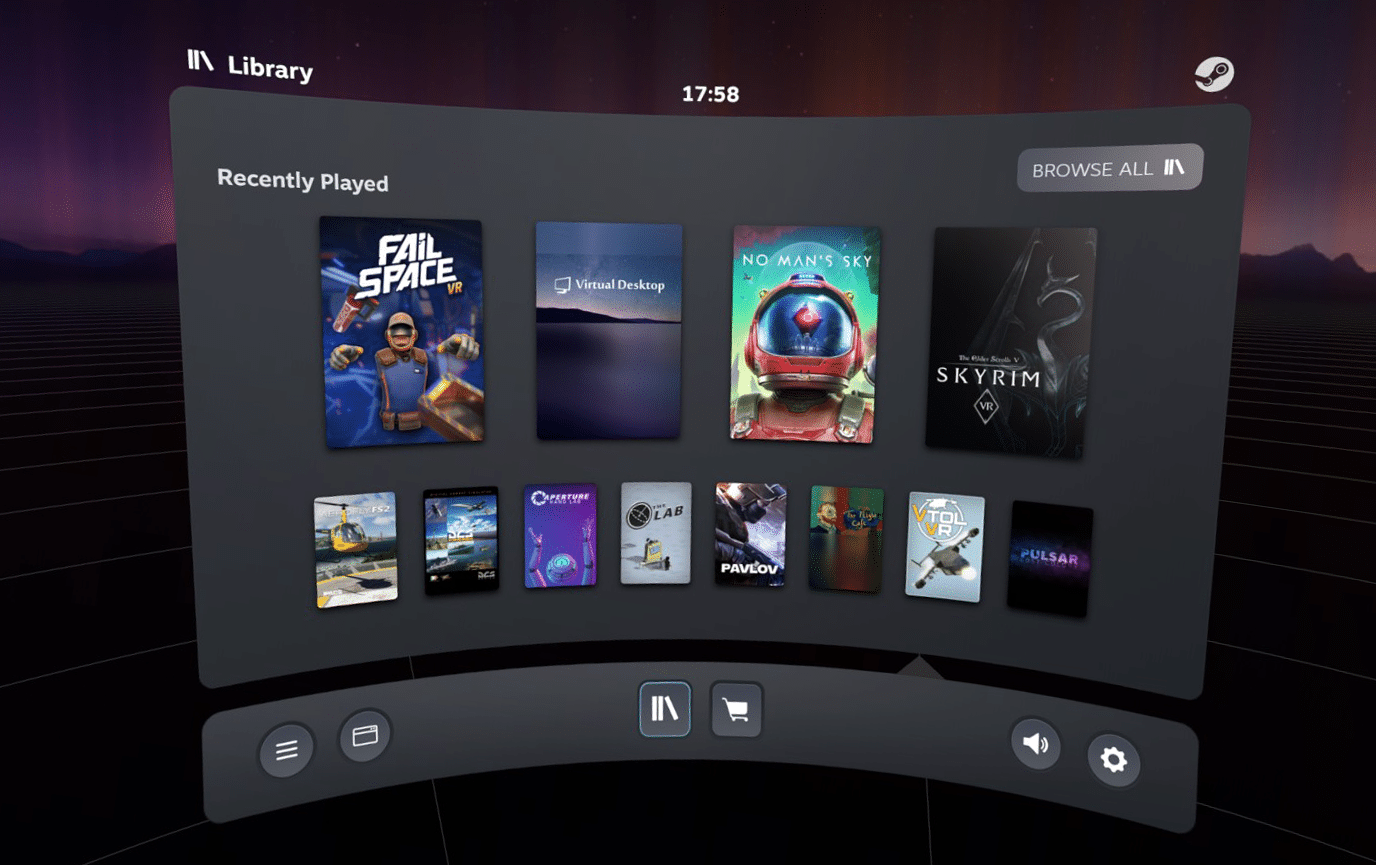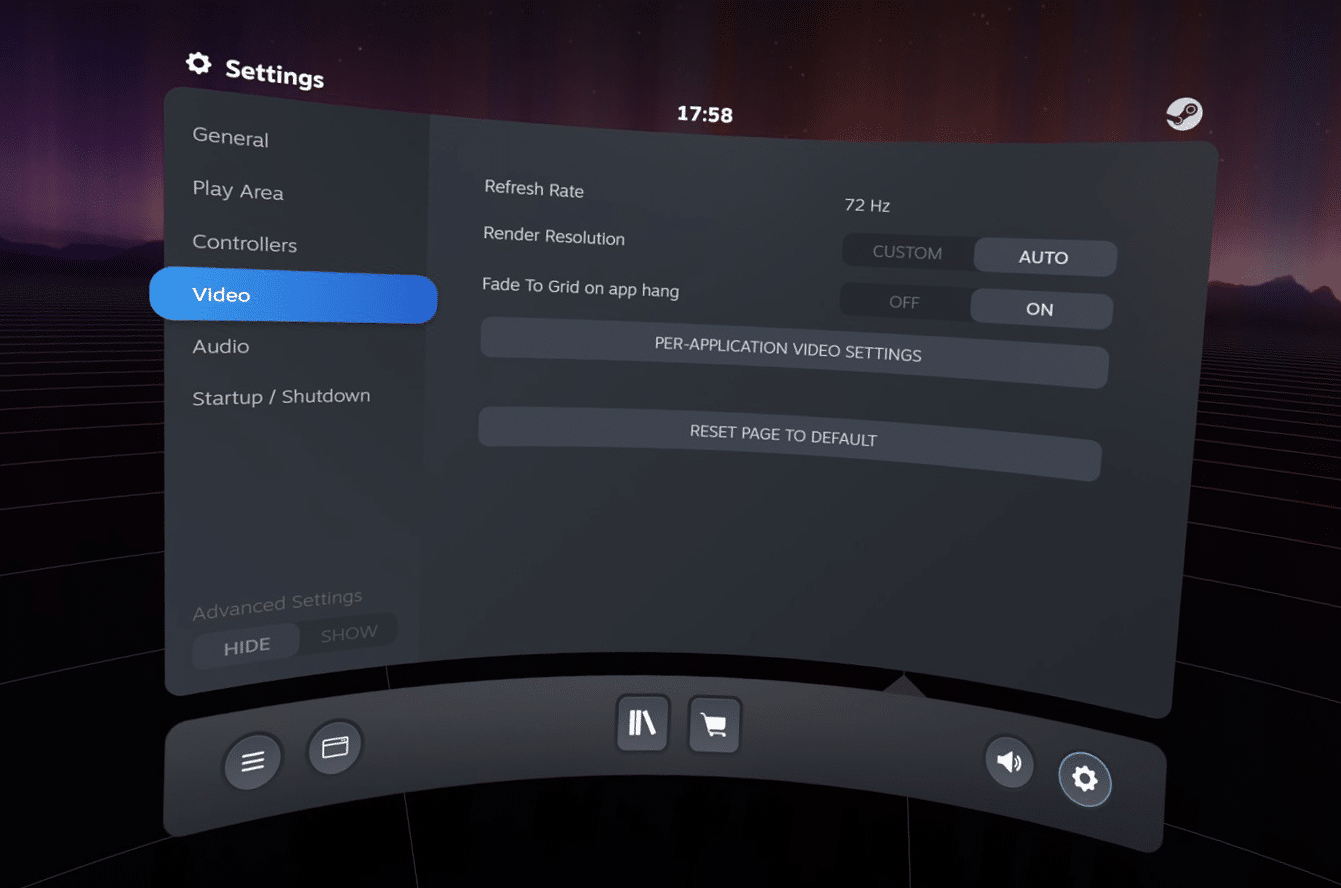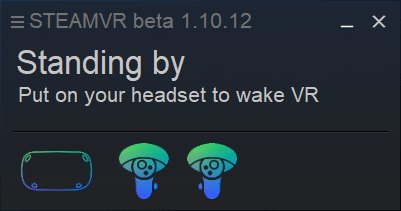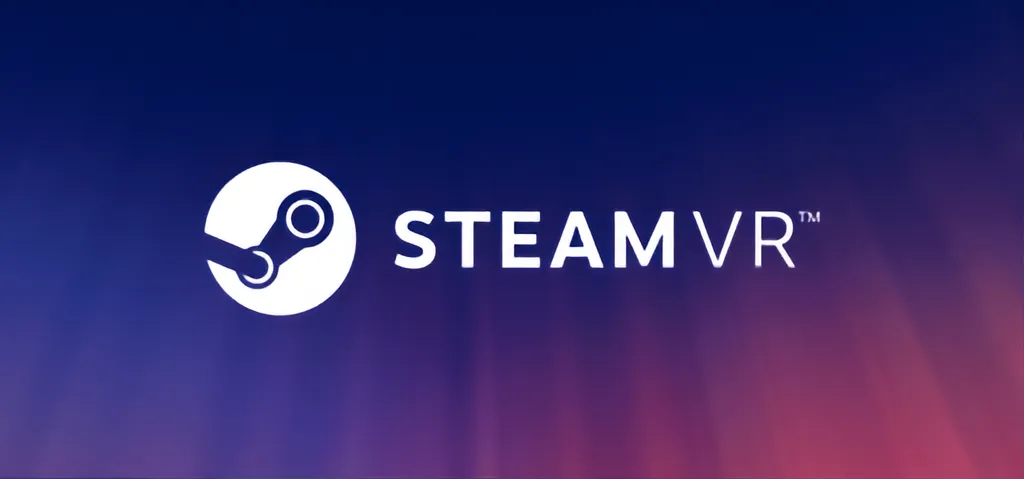The beta version of SteamVR now has an all-new VR interface, as well as adding an icon for Oculus Quest in Oculus Link mode.
SteamVR is Valve’s PC virtual reality platform which supports on Windows, macOS, and Linux. The runtime is downloaded and updated via Steam. SteamVR supports all PC VR headsets, so developers building SteamVR apps can target all PC VR users.
SteamVR’s user interface has been mostly unchanged since it launched back in 2016. But back in December, Valve simplified the desktop settings UI with a cleaner more modern design that better matches the Steam client’s new interface.

This same approach has now been taken to the in-VR interface (called Dashboard). The interface is cleaner and has just six buttons along the bottom:
- Menu (☰): exit SteamVR or open the traditional Steam Big Picture interface
- Desktops: 1-click access to your PC monitors (1 shown at a time)
- Library: 1-click access to your 14 most recently launched VR apps
- Store: lists the top selling VR games on Steam (clicking one opens its page in Big Picture)
- Volume: allows the audio volume to be changed (SteamVR now aims to detect the correct speakers by default)
- Settings: in-VR access to the full SteamVR settings, with the same new UI as the desktop

The ‘Browse All’ button of the Library and listings in Store opens up Big Picture and seems to indicate that Valve intends to build out a new for-VR interface for these parts of its store. This may come by the time this build moves to stable, or it might be a longer term project.
In the current stable build of SteamVR, Facebook’s Oculus Quest (used as a PC VR headset via Oculus Link) would show the same icon as Rift S. Valve now added a new icon for the headset. This doesn’t affect functionality, but it’s a nice polishing touch for the many Quest owners venturing onto Steam to explore its wealth of PC VR content.

The pace of improvement on SteamVR seems to be ramping up recently. Once a platform only a power user could love, SteamVR now has a core interface arguably better than any other VR platform.
Could all these changes, currently in Beta, be elements of the “SteamVR 2.0” Valve referred to last week? It seems likely, but Valve hasn’t said anything about this specifically. We’ll be keeping a close watch on SteamVR’s evolution as the year progresses.


























